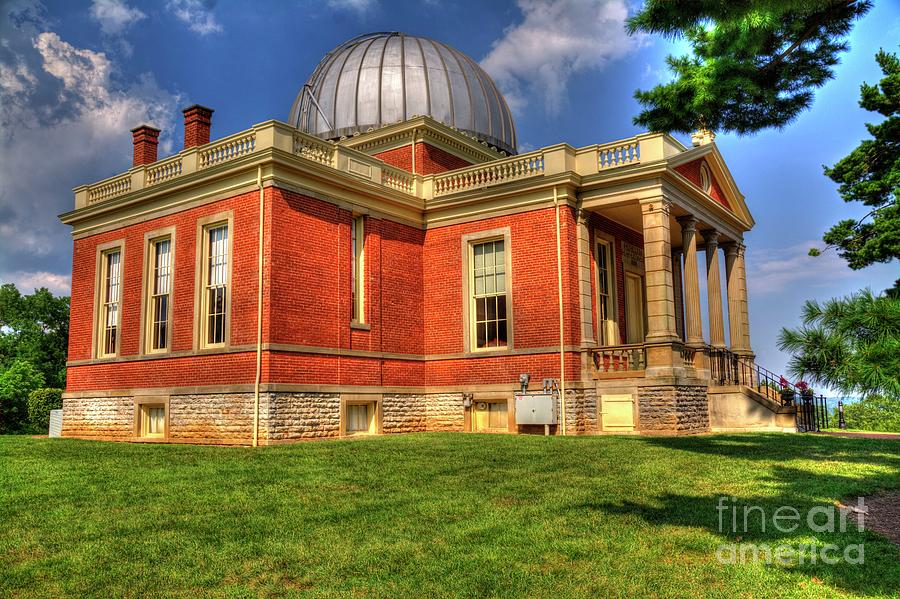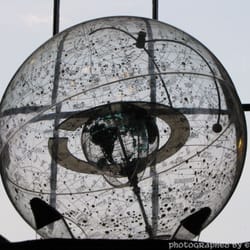
So when the observatory’s director Paul Herget returned from WWII, he took the facility in a new direction, plotting and publishing the orbits of asteroids and comets for researchers worldwide. When Cincinnati’s industrial growth spread and began blackening the skies over the Mount Lookout site in the 1940s, celestial events became harder to view. The observatory's new domed building, eventually named the Herget Building, was designed by architect Samuel Hannaford, the same designer for Cincinnati’s famed Music Hall, added Ventre. Now considered a national historic landmark, the observatory was rebuilt on four acres of land donated by John Kilgour and the city was renamed Mount Lookout –– because in its new location they did a lot of looking out. The then-rural area of Cincinnati known as Delta, with its clear skies five miles northeast of the city, became the perfect spot for the new observatory in 1873. “So when the University of Cincinnati was established in 1870 and the Cincinnati Astronomical Society closed the Mount Adams Observatory, the donated the Merz and Mahler telescope, a significant scientific library and astronomical equipment to the city with the understanding that this legacy would be given to the University of Cincinnati and a new observatory would be built.” “Many civic leaders at the time felt Cincinnati should have its own university,” said Ventre at the anniversary event. It was a time when new colleges, medical schools and libraries were founded and affordable newspapers flourished. John Ventre, historian for the Cincinnati Observatory, described the 1860s as a golden age for the country. Hurley highlighted Mitchel’s success particularly for cataloging double stars and his discovery of what was thought at the time as a formation on Mars’ South Pole that still bears his name (the Mountains of Mitchel). Over the next decade, stargazers captured incredible sights at the observatory and Mitchel conducted significant research. He later said this was the most memorable achievement of his life, Hurley noted. Because of Adams’ overwhelming testimony on behalf of the city and its new observatory, Cincinnati’s Mount Ida was later renamed Mount Adams in his honor.Īdams spent the better part of his presidency trying to convince the government to build observatories but failed.
Cincinnati observatory professional#
President John Quincy Adams traveled to Cincinnati at age 76 to lay the cornerstone for the country’s first professional observatory in Mount Ida on Nov. With the city’s new observatory as the pride of the nation, former U.S. After raising the $7,500 in 1842 to buy the Bavarian-made Merz and Mahler 11-inch refractor telescope, Mitchel realized his dream to build the country’s first public observatory with the world’s second largest telescope - second only to the largest owned by a Russian czar. Igniting that early spark for change, Hurley claimed, was Cincinnati College astronomer Ormsby MacKnight Mitchel, a West Point-trained civil engineer. It marks the transformation in the United States of fundamental change.” “That’s why the story of Cincinnati and its people in the 1840s is so important. “It was a time when health and germs were still poorly understood, and the world was viewed in terms of biblical writings instead of what astronomers understood. “When the Cincinnati Observatory was built in 1843 it was a time when Big Bone Lick was still looked at by Thomas Jefferson as a place where mastodons roamed,” said Hurley during his history presentation at the event. Included in the evening of elegant fare was a walk down memory lane as Cincinnati WKRC-TV anchor John Lomax and local Cincinnati historian Dan Hurley shared the observatory’s UC connection and rich backstory in pictures.


8.Īttended by patrons, supporters and University of Cincinnati faculty and staff, the Cincinnati Monastery event center, a former church cathedral with high vaulted ceilings, became the perfect venue for the night’s gala, lending an otherworldly ambiance and standing less than 50 feet from the observatory’s original 19th-century site on top of Mount Adams. Gathered beneath a dome of celestial stars and candlelit tables, a crowd of nearly 300 celebrated the Cincinnati Observatory’s 175th Anniversary on Nov.


 0 kommentar(er)
0 kommentar(er)
